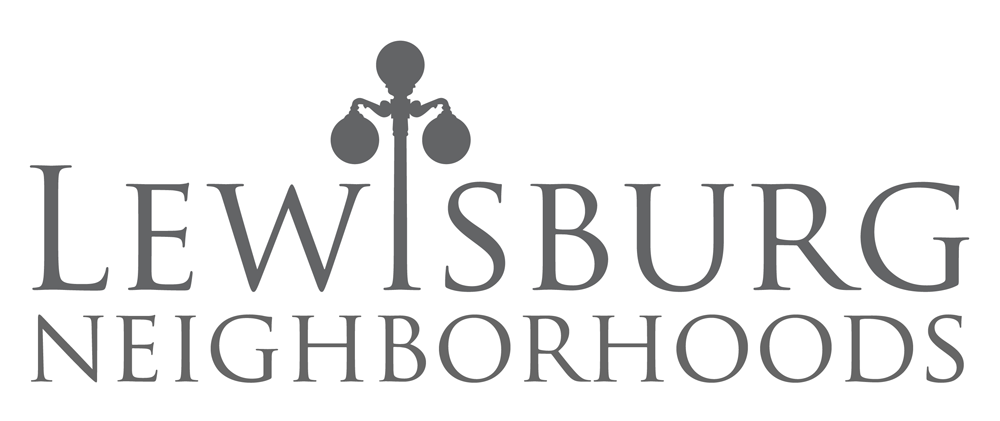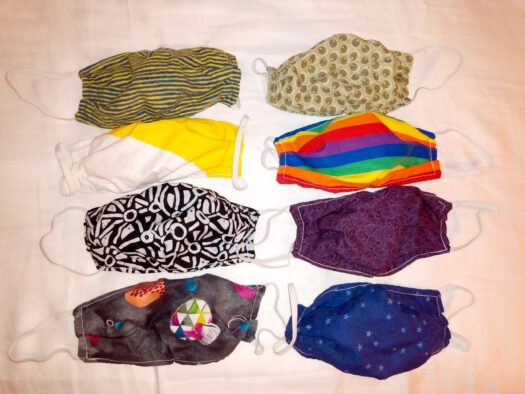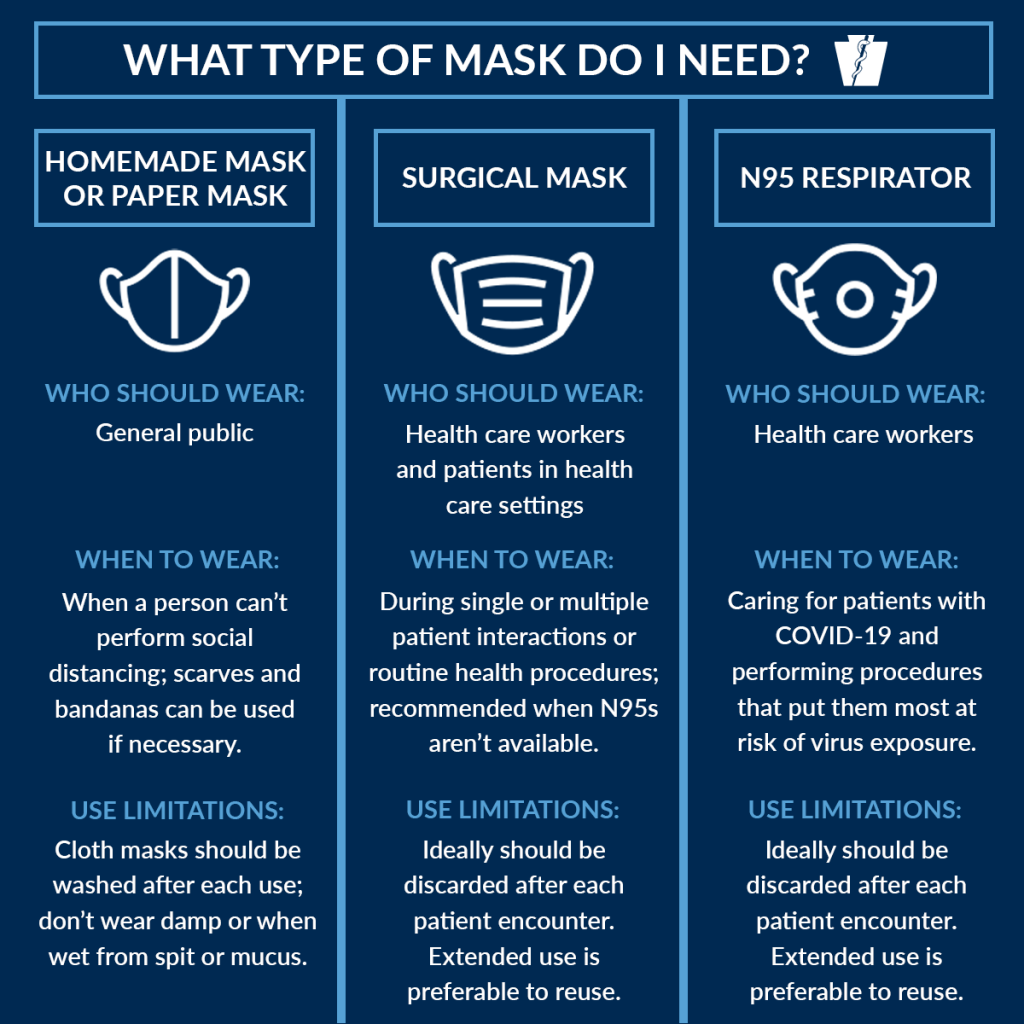
Why is everyone being asked to wear a mask now?
We didn’t know about asymptomatic transmission early on AND we were trying to prevent even greater shortages of personal protective equipment in the event of the public hoarding them at the expense of health care workers’ safety.
Please be sure you understand the proper use of facemasks. They must be used in combination with good hygiene (extensive hand washing and not touching your face) and social distancing, both staying home in general if possible and keeping 6' apart. They are not a replacement for anything, but an augmentation of mitigation measures. They also must be worn properly, i.e. covering nose and mouth, not pulled down or hung off one ear, and definitely not fiddled with incessantly.
Remove and wash directly after wearing! And wash your hands after removing the mask...
Why are people making masks at home?
There is an ongoing need to reserve manufactured masks for healthcare workers (HCW).
Masks are very important for HCW who are regularly in contact with infected people. They are just part of their Personal Protective Equipment (PPE) and hygiene regime, which includes faceshields, gloves, gowns, replacement footwear, and extensive washing.
We all know there are shortages of PPE for medical staff around the country. The country tends to operate with adequate stores and the expectation that if there is an issue in one region or the other, we could shift resources around to ensure supply. We're not really set up for emergency demand everywhere all at once. Clearly better national coordination would help. You can call your federal representatives in both the House and Senate and ask that they work to get federal logistics command straightened out. We need PPE on a massive scale for our healthcare workers nationwide, if they are to be able to help us through this pandemic!
The next priority is to supply essential workers with durable homemade masks. We have a lot of people in our area, from all walks of life working very hard to generate masks in an approximation of industrial scale, just one table-top sewing machine at a time. Mennonites are doing it, high school students are doing it, your friends and neighbors are doing it. Like the title of the post says, some heroes make masks!
Once masks have been secured for those essential, but non-medical workers, homemade masks need to be procured by and for the general public. Those can include sew, no-sew, and ones put together from items around the home,
We are all part of a national defense effort. Think of cottage mask making like the 2020 version of Victory Gardens (though you can also plant those this year). This time around Rosie the Riveter is wielding a sewing machine.
What are these homemade masks good for? Do they even do anything?
They are, admittedly, a last resort, but given the numbers needed and the challenge of identifying who is actually infected, they are now considered helpful. They are not expected to be particularly protective for the wearer, in other words, they are clearly unable to filter out anything the size of a virus. But they are thought to help prevent a given wearer who happens to be infected from infecting others. By minimizing the projection of droplets and aerosols created when the wearer breathes, speaks, sings, coughs, or sneezes. Add to that the fact that people who are not well are less likely to wear a mask if doing so carries a stigma as a sign of sickness. So, masks for everybody!
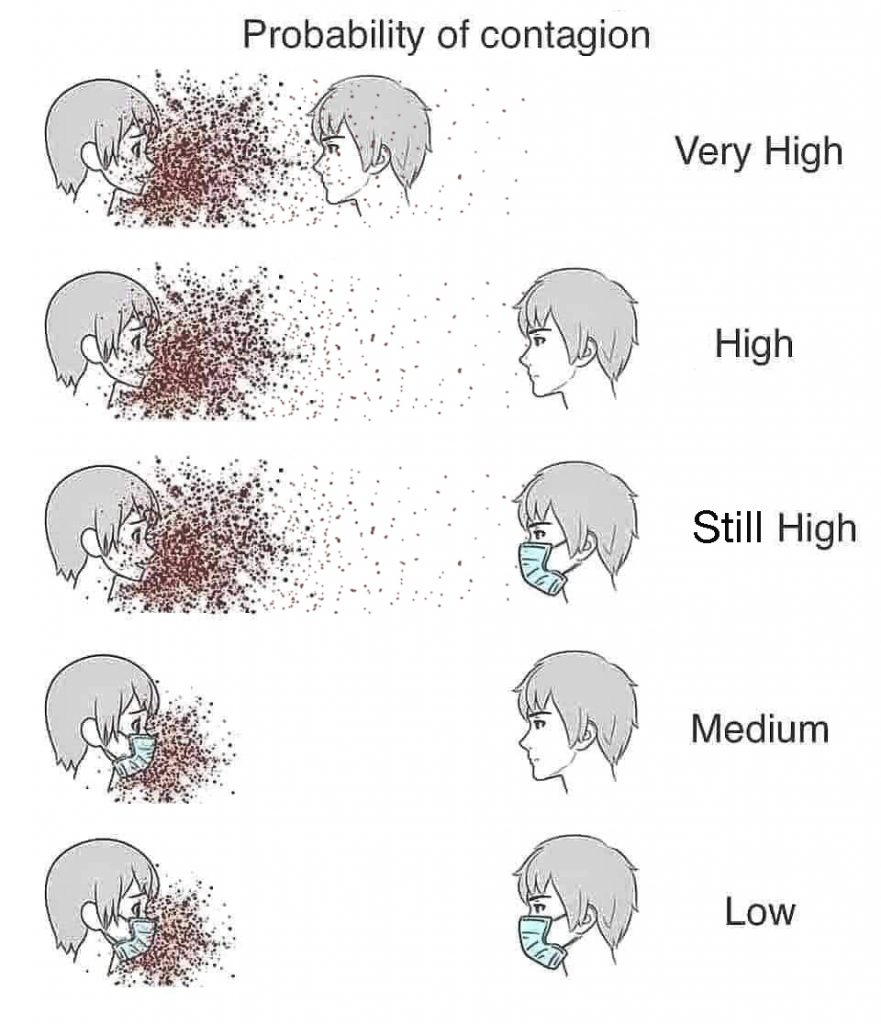
Mask Resources:
- Maskfacts.org is a great general reference site with links to background, research, and patterns
- No sew site with good instructions, including how to make ear loops cut from socks (much more comfortable and more readily available than hair ties or rubber bands).
- A Daily Item article about the requirement to wear masks in public establishments is here.
- The graphics in that article come from materials on the CDC website here.
- Tutorial by a local maker for a fitted mask pattern.
- And this is the CDC page that goes over the strategies for dealing with limited supply of PPE and does mention, at the very bottom, that homemade masks are to be used as a last resort.
- Tightening the fit around the edges of the mask can increase their effectiveness. Article on study of use of sections of stockings worn over the mask from NPR.
- Woe is me, I wear glasses and can't seem to wear a mask without fogging my glasses hopelessly. NYT has some suggestions.
- If you want to help make masks, get in touch with the Greater Susquehanna Valley United Way and/or The Mask Connection facebook group.
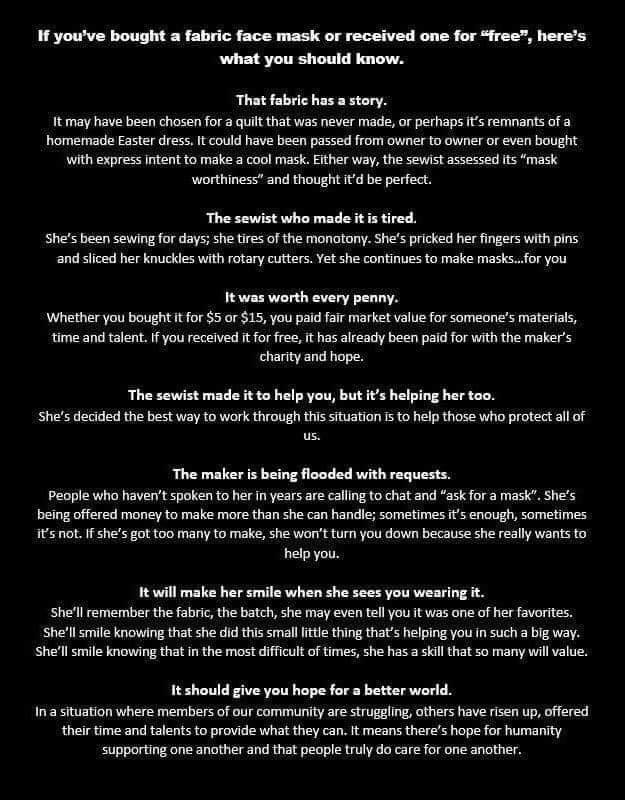
TL;DR -- Design considerations:
- They could offer a pocket to allow a filter to be inserted (a paper towel, part of a coffee filter, vacuum bag or unfolded air filter)
- They should have a recognizable inside and outside, to prevent the wearer from putting it on backwards by accident (though it should also be washed well between uses)
- They may use elastic ear loops but ties can work just as well, are easier to wash, aren't as hard on the ears, and aren't as hard to track down during an elastic shortage.
- Having a metal nose insert to help shape the upper edge around the wearer's nose can be really helpful; it can be made from floral wire, copper, a twist tie, or a pipe cleaner; guard against sharp edges!
- If you are a maker, but not a sewer, there are also opportunities to 3D print parts for face shields, either the headband or stamping the acetate for the shield itself.
- As to materials -- some are better than others at filtering and almost no homemade mask will approximate medical grade gear, especially in terms of sealing and fit. But many materials will suffice for simple containment, especially when combined, as mentioned with good hygiene and social distancing.
- T-shirt material is less ideal than muslin, but with a pocket for a filter it can work and it is easier to work with.
There are certainly still many in need. That's where the neighborhood steps in. You may have neighbors who are already stepping up to make sure that elderly neighbors and friends have a way to pick up the groceries they've ordered, help with yard work, or a chance to have a nice chat on the phone. If you would like some suggestions on how to make that happen on your block in a more systematic and comprehensive fashion, please contact us at news@LewisburgNeighborhoods.org or 570-523-0114 (leave your phone number!).
